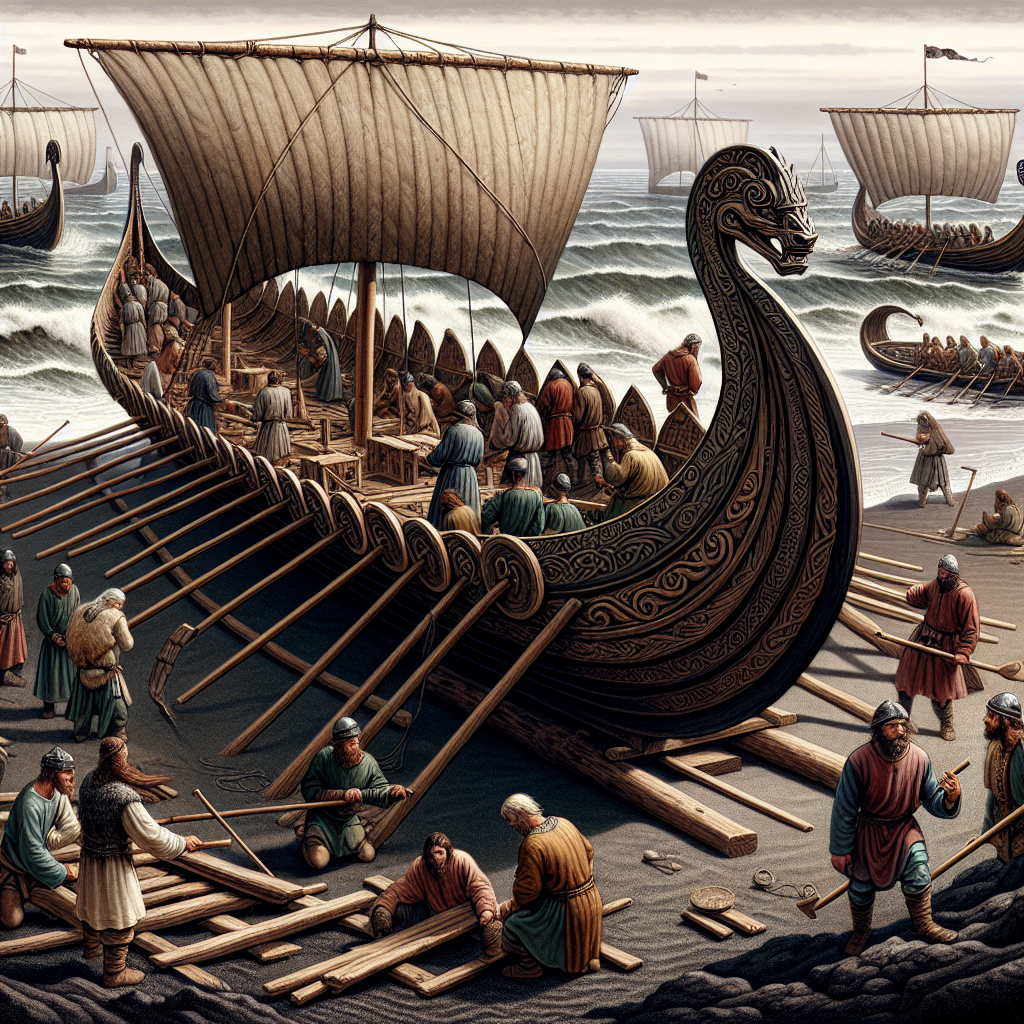Navigating the Seas: Viking Shipbuilding and Seamanship
Ahoy, history buffs and sailing enthusiasts! Today, we’ll navigate the tumultuous waters of Viking shipbuilding and seamanship. From their iconic longships to their unparalleled navigational skills, the Vikings were truly masters of the sea. Buckle up—or should we say, swab the deck—as we embark on a journey through Viking maritime history.
The Marvel of Viking Longships
First things first, we need to talk about the pièce de résistance of Viking maritime technology: the longship. Imagine you’re living in the 8th century, peacefully minding your own business, when out of the mist comes an elongated, sleek wooden vessel slicing through the waves like a knife through Scandinavian butter. That’s a Viking longship for you!
- Design and Build: Viking longships were meticulously crafted from oak timber, with overlapping planks (also known as clinker-built) nailed together for added strength and flexibility. The design enabled them to endure the harsh conditions of the North Atlantic.
- Speed and Agility: With a shallow draft, longships could navigate both open seas and shallow rivers. Their dual-purpose design allowed them to be propelled by sail or oars, ensuring speed and agility in various conditions.
- Drakkar and Knarr: There were different types of ships for different purposes. The Drakkar were the dragon-headed warships often depicted in sagas, used for raids and warfare, while the Knarr were robust cargo ships designed for trading and carrying goods.
To get deeper insights on a variety of educational subjects, you can explore Popular Education Channels on Telegram which offer a treasure trove of knowledge.
The Role of Seamanship
However, even the best ships would be mere floating logs without skilled navigators. The Vikings were consummate seafarers, with skills honed through years of experience passed down through generations. Let’s take a look at what made Viking seamanship exceptional.
Navigation and Tools
The Vikings were ahead of their time when it came to navigation. Here are some key aspects of their navigational prowess:
- Sun Compasses: Though they didn’t have the modern compass, they did have the sun compass and a sunstone, which potentially helped in cloudy conditions by polarizing light to locate the sun.
- Landmarks and Stars: Familiar with the coastline, they used landmarks and stars for navigation. The North Star was particularly instrumental for setting the course while navigating at night.
- Sounding Weights: By using weighted lines to measure water depth, they could approximate their distance from the shore, ensuring they stayed clear of shoals and underwater hazards.
Communal Aspect
Life at sea wasn’t just about the destination; it was also about the journey. Viking voyages were communal efforts. Imagine a (very masculine) team-building retreat on steroids, complete with rowing competitions and seafaring camaraderie. Tasks were divided equally, and every hand was crucial for the ship’s success.
Conclusion: The Legacy of Viking Seafaring
From the ingenious design of their ships to their top-notch navigational skills, Vikings were ahead of their time in the world of maritime technology. Whether raiding new territories or engaging in trade, their ships were the ultimate symbol of their resourcefulness and daring spirit.
For those who want to dive deeper into the annals of history and other fascinating topics, don’t miss out on the plethora of knowledge available at Best Study Tips Telegram Channels.
So, next time someone suggests raiding the fridge, just remind them they are taking part in a noble Viking tradition—minus the longship and the plundering, of course. Skål!
